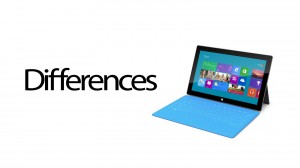I’m writing this mainly for a friend, but after looking into the subject, I figured my site could use a bit of information on the matter as well. Windows 8 releases tomorrow and as expected, it comes in multiple flavors depending on your specific needs. There are some key differences between them, so listen up!
 First, let’s look at the list of Windows 8 editions:
First, let’s look at the list of Windows 8 editions:
- Windows 8 – Available in 32 and 64 bit versions, Windows 8 is the most basic edition you can get. It features all of the most essential requirements a typical home user would need like live tiles, Windows Store, Internet Explorer 10, Microsoft account integration, the standard desktop, etc. Windows 8 is the direct replacement of Windows 7 Home Basic.
- Windows 8 Pro – Windows 8 Pro also comes in both 32 and 64 bit versions and includes everything Windows 8 has, but it adds more business-like features such as Remote Desktop, Windows server domain compatibility, encrypted file system, Hyper-V, Virtual Hard Disk booting, Group Policy and BitLocker. Media Center can be added to Windows 8 Pro as a free add-on. Windows 8 Pro is a direct replacement of Windows 7 Pro and Ultimate editions.
- Windows 8 Enterprise – This edition will be much harder to find as it’s only intended for high-end corporate networks that require more than what Pro can do. Enterprise includes everything that Pro has (minus Media Center capabilities) and adds features like Windows To Go, DirectAccess and BranchCache.
- Windows 8 RT – Windows 8 RT will only be available on ARM devices such as tablets and other mobile devices. RT features touch-optimized apps such as Office 2013 RT which ships free with Widows 8 RT.
As you can see by this list, Windows RT is considered to be the mobile version of Windows 8. The most notable difference will be how you get apps. On a typical Windows PC, to get software, you can download it or install it from a disc or local network share. On a Windows RT device, the only way to get software is to buy it from the Windows Store. This is because Windows 8 RT only has a partial desktop.
Let’s compare this setup to Apple. Apple makes computers and tablets. On their computers, they offer a full operating system called OSX (current version is 10.8.2, codenamed Mountain Lion), while on their tablets, they offer a mobile operating system called iOS (current version is 6.0.1). There are many things that can’t be done in iOS as compared to OSX.
So, if you’re planning on getting the Microsoft Surface, consider your choice. If you’re looking to have to a direct copy of your Windows 8 desktop with all the same features and the ability to install software not from the Windows Store, you should wait until the next version of Surface comes out (hopefully soon). But take into consideration that while RT comes with a free version of Office 2013 RT, the regular version of Office 2013 will cost you.
My Thoughts
I hope I like Windows 8 after I upgrade my desktop tomorrow. If I do, then I might consider buying a Microsoft Surface with full blown Windows 8 in order to have a device that syncs everything with my desktop. On the other hand, if Windows 8 doesn’t do much for me in the way of syncing my life as it is, I might just stick with Android on a new Nexus device although I’m hearing about a program called BlueStacks that allows Android apps to run on Windows 8!! This month has so many new things coming out…the choices are endless!
Then again, there’s always the $8,000 touch-screen table that has a computer in it.